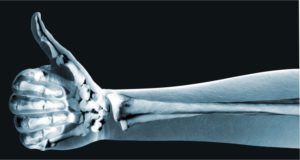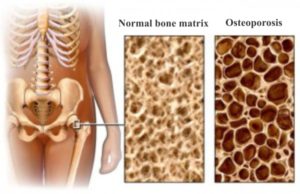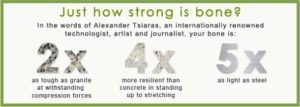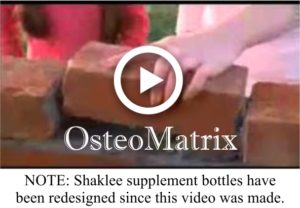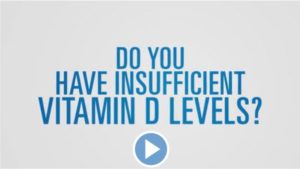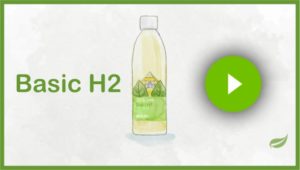This issue of Making a Difference! is brought to you by…
Nolan Health Enterprises
631.608.0087
Send Us An Email
Go Shopping On Our Website
In this issue…
♦ How is your bone health? ♦ 4 signs you have unhealthy bones
♦ What happens to bones as we age? ♦ Your amazing bones
♦ How calcium and vitamin D boost bone health
♦ The Shaklee Difference… OsteoMatrix ♦ The Shaklee Difference… Vita-D3
♦ Planning a trip? Be sure to pack Shaklee! ♦ And don’t forget to pack…
When someone asks you what is good for arthritis, you could respond, “You don’t want anything good for arthritis; you want something bad for arthritis and good for your body.
~ Dr. Forrest C. Shaklee, Sr.
How is your bone health?
You may be wondering: “What exactly is ‘bone health’ and why does it matter?”
Your bones are very porous structures made up of minerals like calcium and magnesium. They perform many important functions, one of which is protecting your vital organs from damage. For example, your ribs form a “cage” around your internal organs, heart, and lungs, and your skull protects your brain from injury.
Bones also keep you moving, standing, and functioning. If you didn’t have leg or arm bones, it’d be pretty difficult to get something done, right? Your bones provide stability.
Your bones also help repair and rebuild cells and store minerals such as calcium and phosphorous, which help keep your bones strong. They also release those minerals into your system when you need them for other uses.
Yes… you need healthy bones for myriad functions. In this newsletter, we’ll not only tell you more about how amazing your bones are, but how to keep them strong for your entire life.
4 signs you have unhealthy bones
Osteoporosis is called the “silent disease” because it doesn’t exhibit symptoms to tell you there is something wrong. Often people don’t find out they have it until they fracture a bone or get a bone scan. By then, a lot of bone density is often lost.
However, there are some telltale signs of possible bone loss, if you know what to watch for:
⇒⇒ fingernails that chip easily
⇒⇒ receding gums
⇒⇒ reduction in grip strength
⇒⇒ racing heartbeat
What happens to bones as we age?
The health of your bones is really key in maintaining good health for your entire life. You see… as you age, your bones grow and change. For example, the length of your femur (thigh bone) is 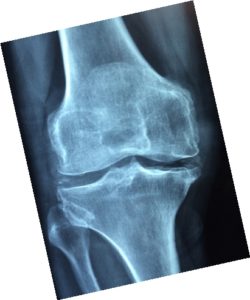 much different now than when you were five years old. And as you age, due to a number of factors… including activity, diet, fitness, and genetics… your bone health… or bone density… can deteriorate. Bone density is the measurement of mineral composition in your bones. More bone density means that your cells are essentially closer together and stronger. Bone loss refers to losing bone density and the space between your bone cells becoming larger… more porous. If you lose bone density then you are more at risk for fractures. Unfortunately, bone loss is a natural part of getting older. Peak bone mass (bone density) is reached around age 30. After 30, new bone cell formation slows down. However, there are things that you can do to slow down future bone loss.
much different now than when you were five years old. And as you age, due to a number of factors… including activity, diet, fitness, and genetics… your bone health… or bone density… can deteriorate. Bone density is the measurement of mineral composition in your bones. More bone density means that your cells are essentially closer together and stronger. Bone loss refers to losing bone density and the space between your bone cells becoming larger… more porous. If you lose bone density then you are more at risk for fractures. Unfortunately, bone loss is a natural part of getting older. Peak bone mass (bone density) is reached around age 30. After 30, new bone cell formation slows down. However, there are things that you can do to slow down future bone loss.
Osteoporosis
Osteoporosis is a condition where a significant amount of bone density has been lost over time, making the bones brittle and subject to breaking. If or when you get osteoporosis depends in large part on how much bone mass you have before the decline starts. It makes sense that the more bone mass you have in the beginning, the longer it will take to lose it.
Bone health factors
Bone mass is affected by several factors. Those that are not genetic-based are under your control:
Calcium intake. A dietary calcium deficiency, at any stage in life, means a diminished amount of bone density. Adults age 19 to 50, and men 51 to 70, should get at least 1,000 milligrams of calcium per day. For men over age 70 and women over age 50, the amount increases to 1,200 milligrams per day. To make sure you’re getting enough, take OsteoMatrix daily.
Vitamin D. A deficiency of this vitamin slows down the absorption rate of calcium so even if you are getting enough, it might not reach your bones. Just 15 to 20 minutes of sun exposure daily gives you more than enough vitamin D… around 10,000 IUs. But… if you use sunscreen, your exposure is drastically reduced. So… to ensure you get at least 600 international units (IUs) daily if you’re between 19 to 70 and 800 IUs if you’re age 71 or older, be sure to take Shaklee Vita-D3.
Exercise. There is a direct connection to being physically active and a lowered risk of getting  osteoporosis. Be sure to get at least 150 minutes per week of weight-bearing activity.
osteoporosis. Be sure to get at least 150 minutes per week of weight-bearing activity.
Unhealthy habits. Study results have shown a link between smoking and alcohol consumption and bone loss because both nicotine and alcohol interfere with the absorption of calcium into the bones.
To maintain bone health and reduce the risk of osteoporosis, start protecting your bones as early as you can.
Your amazing bones
Your skeleton is a fascinating structure which allows you to achieve a vast array of physical functions. Comprised of 206 bones, your skeleton not only protects your vital organs, it keeps you moving, standing, and functioning.
Your bones also help repair and rebuild themselves. There are three types of bone cells including: osteoblasts, which make new bone and help repair damage; osteocytes, which are mature bone cells that help continue new bone formation; and osteoclasts, which break down bone.
As the main storehouse for bone-strengthening minerals such as calcium, magnesium and phosphorous, your bones also act as sentinels to guard against critical mineral deficiencies elsewhere in the body. For example, you need minerals for your heart to function and beat normally. If you don’t have enough calcium or magnesium in your bloodstream to keep your heart beating, your bones will release those minerals to correct the levels and keep you alive.
Your bones also store fat and produce blood cells in the. unique connective tissue known as bone marrow that fills their interior. There are two types of bone marrow: yellow bone marrow and red bone marrow. Yellow bone marrow contains fat which can be released for energy. Red bone marrow is where red blood cells, white blood cells, and platelets are all produced.
How calcium and vitamin D boost bone health
Bones in the human body are made up of minerals (primarily calcium) bound together by a 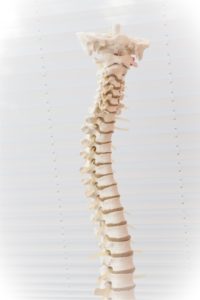 protein mixture to form an interior tightly woven honeycomb-like pattern. Before the age of 20, bones are growing both in length and girth. At about age 20, they reach what is known as PBM (peak bone mass).
protein mixture to form an interior tightly woven honeycomb-like pattern. Before the age of 20, bones are growing both in length and girth. At about age 20, they reach what is known as PBM (peak bone mass).
Once PBM is reached, bones go through a process called modeling where they thicken in density; this usually lasts until the early 30s.
As the years tick by, bone mineral continually breaks down, gets absorbed back into the body and new bone is created through a process called remodeling. The problem is that after about age 34, more bone mass is lost than is being replaced, resulting in a less dense honeycomb structure.
Calcium
If you’re not getting enough calcium in your diet, guess where the organs that need it are going 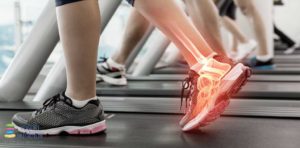 to go to obtain it? That’s right… from the primary calcium storehouse… your bones! That’s why you must make sure you’re getting enough daily calcium from your diet and supplementation. If you don’t, your bones may suffer the consequences, becoming brittle and at risk of breaking. And because healthy bone structure has been sacrificed, in older adults, broken bones may not heal right… or may not heal at all.
to go to obtain it? That’s right… from the primary calcium storehouse… your bones! That’s why you must make sure you’re getting enough daily calcium from your diet and supplementation. If you don’t, your bones may suffer the consequences, becoming brittle and at risk of breaking. And because healthy bone structure has been sacrificed, in older adults, broken bones may not heal right… or may not heal at all.
Because bone remodeling is a natural bodily function, you can’t really alter the process. How-ever, you can slow down the progression of bone loss by packing your diet with adequate amounts of calcium, magnesium, phosphorous and…
Vitamin D
Even if you’re getting enough calcium, a deficiency in vitamin D will prevent your body from being able to absorb as much as it should. You need one to make the other one work right. Vitamin D deficiency is common in the U.S. as few foods naturally contain it. Saltwater fish like salmon, tuna, cod and swordfish are good natural sources as are egg yolks. Some 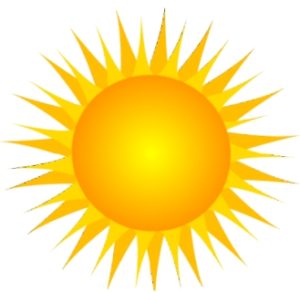 foods high in calcium, like milk, yogurt and cereals, are fortified with vitamin D, so you can obtain both.
foods high in calcium, like milk, yogurt and cereals, are fortified with vitamin D, so you can obtain both.
Of course, one of the best ways to get vitamin D is to sit out in the sun so your body can synthesize it from the sun’s rays. If you’re light-skinned, all you need is about 15 minutes exposure twice a week to get more than enough sun for the vitamin D your body needs. If you aren’t a “sun worshipper” or if you use lots of sunscreen, then you must make sure to get enough of this crucial nutrient by taking Vita-D3.
Other things you can do…
♦♦ Reduce coffee consumption. Studies consistently show that women who drink coffee have a greater risk of osteoporosis.
♦♦ Stop drinking soda. The phosphorus in caffeinated soda leaches calcium from bones.
♦♦ Reduce stress. Stress releases the hormone cortisol into your body, eventually leading to calcium depletion.
♦♦ Have your bone density checked.
♦♦ Add weight-bearing exercise to your daily routine.
The Shaklee Difference… OsteoMatrix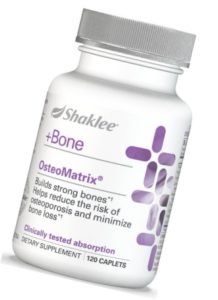
OsteoMatrix provides a unique matrix of key nutrients needed to build and maintain strong bones with 100% DV of nature’s most concentrated and easily absorbed sources of elemental calcium plus magnesium to help strengthen bones, along with vitamin D to stimulate calcium absorption. Also with vitamin K, zinc, copper, and manganese.
Clinically tested absorption
For the body to use calcium to build and maintain strong bones, it must first be absorbed. Poor absorption is the main reason most calcium supplements on the market are ineffective.
In a clinical trial, consumption of just two OsteoMatrix caplets resulted in statistically significant increases in blood calcium levels as measured over a 12-hour period.
The Shaklee Difference… Vita-D3
 Vitamin D plays a major role in protecting your health and is vital for overall well-being. It aids in calcium absorption for maintaining strong bones and teeth.
Vitamin D plays a major role in protecting your health and is vital for overall well-being. It aids in calcium absorption for maintaining strong bones and teeth.
Vita-D3 contains 1,000 IU of vitamin D3, the most potent form of vitamin D.
Vita-D3 is the culmination of recent scientific research including two Shaklee industry-leading vitamin D studies. Supplemental vitamin D is clinically supported and proven to significantly raise blood levels of vitamin D.
Purity is guaranteed by over 300 quality tests.
Planning a trip? Be sure to pack Shaklee!
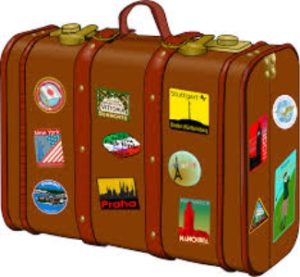 Travelers today face many challenges: jet lag, unfamiliar and sometimes contaminated foods, polluted water, bacteria and viruses in strange hotel rooms, muscle soreness from cramped airline seats and overexertion, and long exposure to harmful UV rays associated with travel to sunny locations.
Travelers today face many challenges: jet lag, unfamiliar and sometimes contaminated foods, polluted water, bacteria and viruses in strange hotel rooms, muscle soreness from cramped airline seats and overexertion, and long exposure to harmful UV rays associated with travel to sunny locations.
You can travel a little safer and wiser if you pack a little Shaklee in your overnight bag:
___ Optiflora DI… for intestinal balance
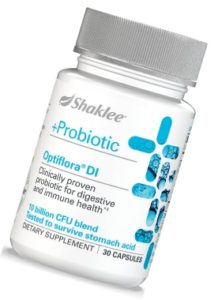 ___ Herb-Lax… to relieve constipation due to unfamiliar foods, stress and travel
___ Herb-Lax… to relieve constipation due to unfamiliar foods, stress and travel
___ Vitalizer or Life Strips… for essential nutrients while traveling
___ Life Shake Pouchs… to give you easily digestible protein for extra energy and stamina
___ NutriFeron… for superior immune protection
___ Stress Relief Complex… helps relax the body and mi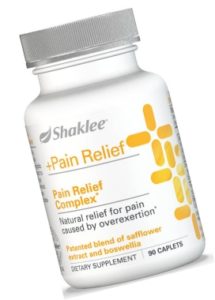 nd while combating stress
nd while combating stress
___ Gentle Sleep Complex… to help you rest between vacation adventures
___ Shaklee 180 Snack Bars… for healthy snacking
___ Pain Relief Complex… nature’s answer to pain due to overexertion
___ Joint & Muscle Pain Cream… relief for joint and muscle soreness
___ Herbal Blend Multi-Purpose Cream… soothes skin irritations and sore feet
___ SPF 30 For Body… to protect your skin from harmful UV rays
And don’t forget to pack…
Get Clean Germ Off Wipes… to wipe down microbe laden surfaces in hotels and restrooms.
Get Clean Basic H2… the biodegradable, pH-balanced, multi-purpose cleaner that you can use:
⇒⇒ to hand-wash clothes
⇒⇒ as a gentle body wash or shampoo
⇒⇒ as an “invisible glove” for messy situations. Just coat hands with Basic H2, let dry, then dig into paint, dirt, grease, etc.
⇒⇒ as a safe, natural insect repellent. Apply to skin and let dry.

